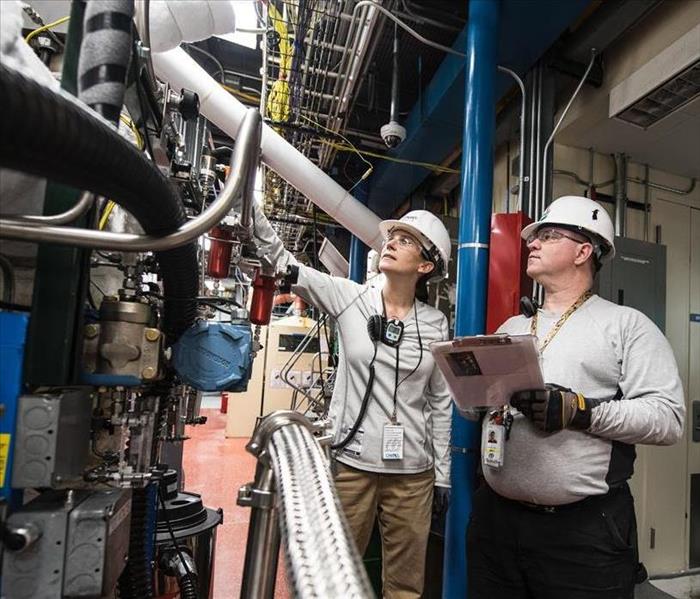Nine Tips for Creating Water Damage Mitigation Plans
5/26/2020 (Permalink)
Do you have a water damage mitigation plan in place?
You might not realize it, but water can be one of the most destructive things that your property could ever face. When water finds its way into an environment that was not designed to be wet, lasting damage can occur very quickly.
In fact, according to Zurich North America, water losses cost up to three times more than insurance claims that do not involve water. The bulk of these losses, according to CNA, come from damaged water supply lines – specifically, burst pipes during cold weather.
The takeaway: a water loss can happen just about anywhere, without much warning. That’s why having a water damage mitigation plan is so important. With a documented process for dealing with water damage as it happens, you’ll be able to react much more quickly and minimize the long-term consequences of your disaster.
Here are nine tips for creating your plan:
1. Find your leader.
A clear chain of command ensures that your organization will be able to act quickly in a crisis. Choose a leader who you can trust to react quickly, delegate intelligently, document thoroughly and implement your plan completely.
2. Break your plan down with specifics.
Don’t just come up with a general checklist for mitigation. Devise a specific and detailed plan for each building or area that you’re responsible for, with designated responsibilities for particular employees who will be able to spring into action in a crisis situation 24 hours a day.
3. Know your detectors.
Go into detail about how a problem might be detected. Will you perform regular manual checks and inspections? Will you perform specific checks after a severe weather event? Do you have automatic detection methods that you’ll rely on as well?
4. Study your schematics.
Even if you think that your employees know your building like the backs of their hands, it pays to make sure that key personnel pull and study your interior and exterior schematics. They should pay special attention to piping, sprinklers, pumps, valves, electrical breakers and gas shutoffs.
5. Photograph and label all shutoffs.
Use standardized tags to label each shutoff valve, and include photographs of the valves in your plan. This step ensures that there will be no confusion about what gets shut off when in an emergency.
6. Make a checklist for every eventuality.
How will you respond to a sprinkler leak? A flood? A burst pipe? Will those processes differ in any way? If so, make sure that you include specific instructions for each.
7. List emergency numbers for all vendors.
Make a list of trusted vendors that will be able to respond in an emergency situation and jot down their contact information in a consolidated place. This list might include plumbers, roofers, electricians, contractors, insurance agents, alarm companies and local authorities. By choosing your go-to vendors before an emergency takes place, you’ll greatly improve your ability to make decisions quickly.
8. Stock emergency spill and pipe repair kits.
Work with your maintenance team to put together kits to deal with spills and burst pipes as soon as they occur. These kits should include your mitigation plan along with things like sheets to cover electronics, small portable pumps, fans and other tools that can minimize water damage quickly as you wait for professional help to arrive.
9. Communicate!
Don’t just expect your staff to read, internalize and use the plan you create. Set a meeting to go over the plan in detail with everyone involved, especially those who may need to enact the plan in your absence. Don’t assume that you’ll be on-site to manage every disaster – accidents tend to happen when we’re least equipped to deal with them.
Still not sure how to move forward with your water damage mitigation plan? Don’t worry – we can help! Call 716-646-6684 today and ask how we can help you to put together an Emergency READY Profile, free of charge.






 24/7 Emergency Service
24/7 Emergency Service